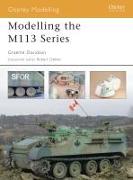Review of Factors Affecting Fecundity, Oviposition, and Egg Survival of Grasshoppers in North America (Classic Reprint)
BücherAngebote / Angebote:
Excerpt from Review of Factors Affecting Fecundity, Oviposition, and Egg Survival of Grasshoppers in North AmericaPickford (1960) reported that the decline in fecundity as the season advanced was not a result of aging of the females but was attributed to a seasonal decline in temperature. The oviposition rate rose sharply when grasshoppers were brought from the field into the laboratory, where temperatures were higher. Again, Pickford (1962) reported that grasshoppers reared on similar foods in the laboratory laid up to three times as many eggs as those in the field because of higher temperatures in laboratory cages. He (l966a) also stated that spring weather can directly affect egg - laying patterns from year to year through its effects on nymphal developmental rates and consequently on the maturation of adults. Warm spring weather permits early grasshopper maturity and egg laying, whereas a cool spring may reduce egg deposition, especially if temperatures decline early in the fall. Pickford (1966a) alsoreported that the rate of egg deposition was dependent largely on prevailing temperatures. When maximum temperatures averaged 26°c or higher during the fortnight, oviposition usually averaged four eggs per day per female or higher (about one egg pod per female every 4 - 5 days), but when temperatures averaged less than oviposition declined by more that 50 percent. Some egg pods were laid during cool weather when the average air temperature was only 6° provided the soil surface temperature exceeded 21° for short periods of time.A progressive decline in fecundity as dates of hatching became later was reported by Pickford In one study (pickford l966a), egg production decreased in 2 out of 3 years as hatching took place later in the season. It dropped from to pods per female in 1961 and from to pods per female in 1962, probably due to lower temperatures. Generally.About the PublisherForgotten Books publishes hundreds of thousands of rare and classic books. Find more at www.forgottenbooks.comThis book is a reproduction of an important historical work. Forgotten Books uses state-of-the-art technology to digitally reconstruct the work, preserving the original format whilst repairing imperfections present in the aged copy. In rare cases, an imperfection in the original, such as a blemish or missing page, may be replicated in our edition. We do, however, repair the vast majority of imperfections successfully, any imperfections that remain are intentionally left to preserve the state of such historical works.
Folgt in ca. 10 Arbeitstagen




